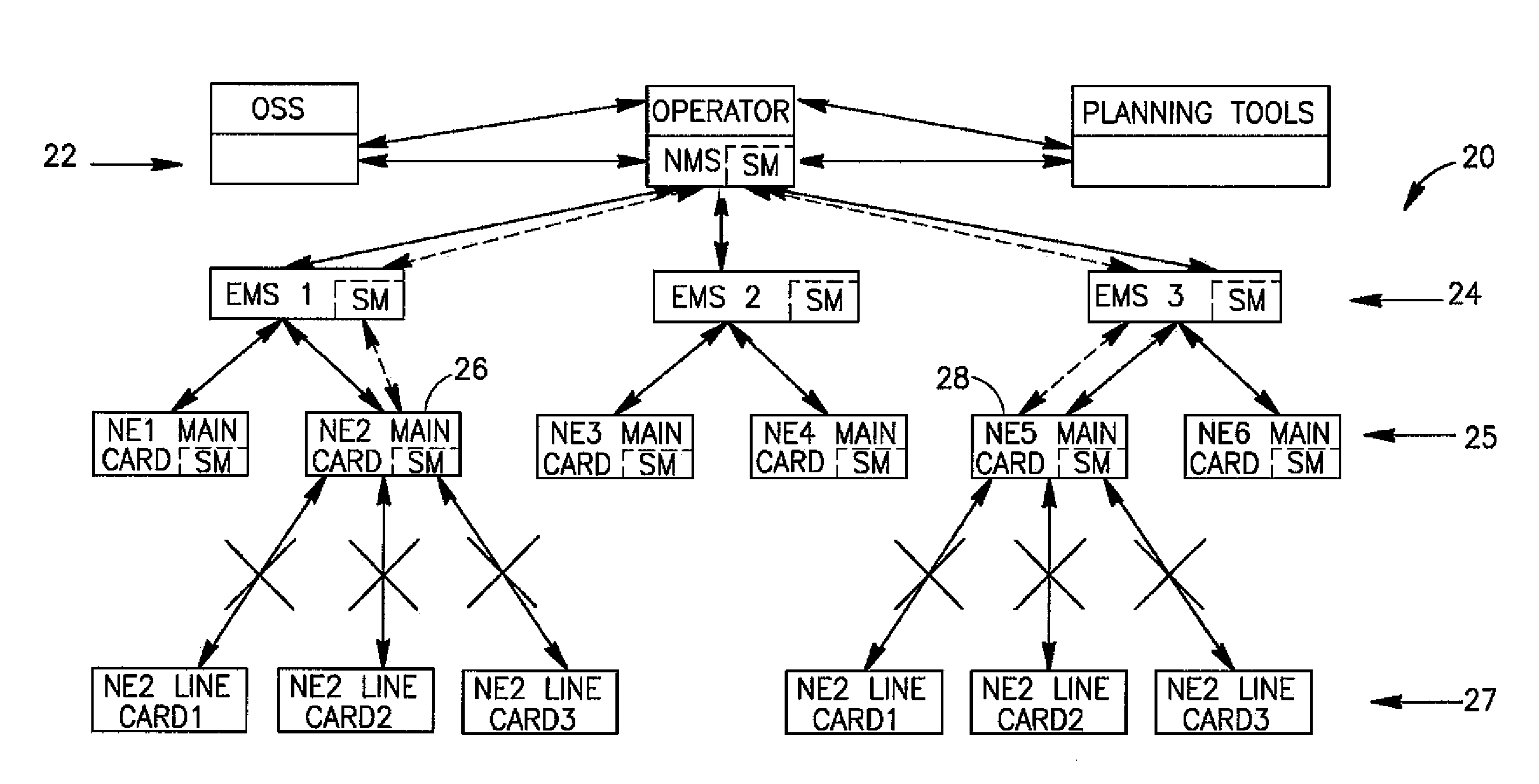Technique for management of communication networks
a communication network and communication technology, applied in the field of communication network management technology, can solve the problems of affecting traffic, affecting the operation of the network, and unable to see at a glance the whole picture of the communication, so as to achieve the effect of effective (accurate and inexpensive) method and system for managing/controlling the operation of the communication network
- Summary
- Abstract
- Description
- Claims
- Application Information
AI Technical Summary
Benefits of technology
Problems solved by technology
Method used
Image
Examples
Embodiment Construction
[0065]FIG. 1 illustrates a generalized block diagram of an exemplary multi-layer management system 10 in the prior art. The upper layer of management 12 is supervised by an Operator and comprises the NMS block and two optional blocks (Operation Support System OSS and planning tools) which are in communication with the NMS. The planning tools block may be considered to belong either to the management layer of NMS, or to be the uppermost layer of management. An EMS management layer 14 is an intermediate layer, which comprises EMS devices / software in communication with the NMS. Each EMS manages a number of Network Elements NE.
[0066]Each of the NEs is usually a complex switching equipment piece. NEs may be routers, switches, cross-connectors, DSLAMs, or the like manufactured by various companies and connected to a number of clients. The plurality of NEs 16 form an NE management layer 15 (which is an NE main cards sub-layer) and an NE line card sub-layer 17 (which is a basic layer of the...
PUM
 Login to View More
Login to View More Abstract
Description
Claims
Application Information
 Login to View More
Login to View More - R&D
- Intellectual Property
- Life Sciences
- Materials
- Tech Scout
- Unparalleled Data Quality
- Higher Quality Content
- 60% Fewer Hallucinations
Browse by: Latest US Patents, China's latest patents, Technical Efficacy Thesaurus, Application Domain, Technology Topic, Popular Technical Reports.
© 2025 PatSnap. All rights reserved.Legal|Privacy policy|Modern Slavery Act Transparency Statement|Sitemap|About US| Contact US: help@patsnap.com



